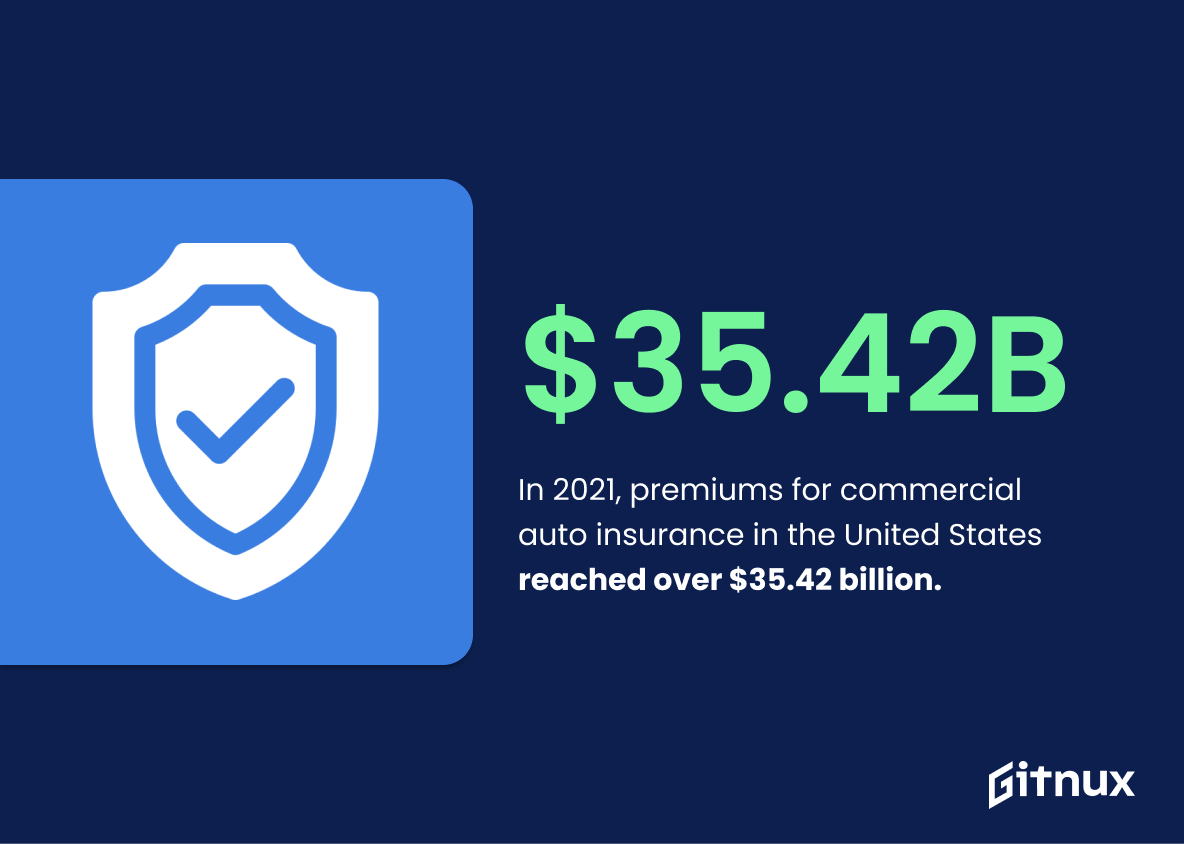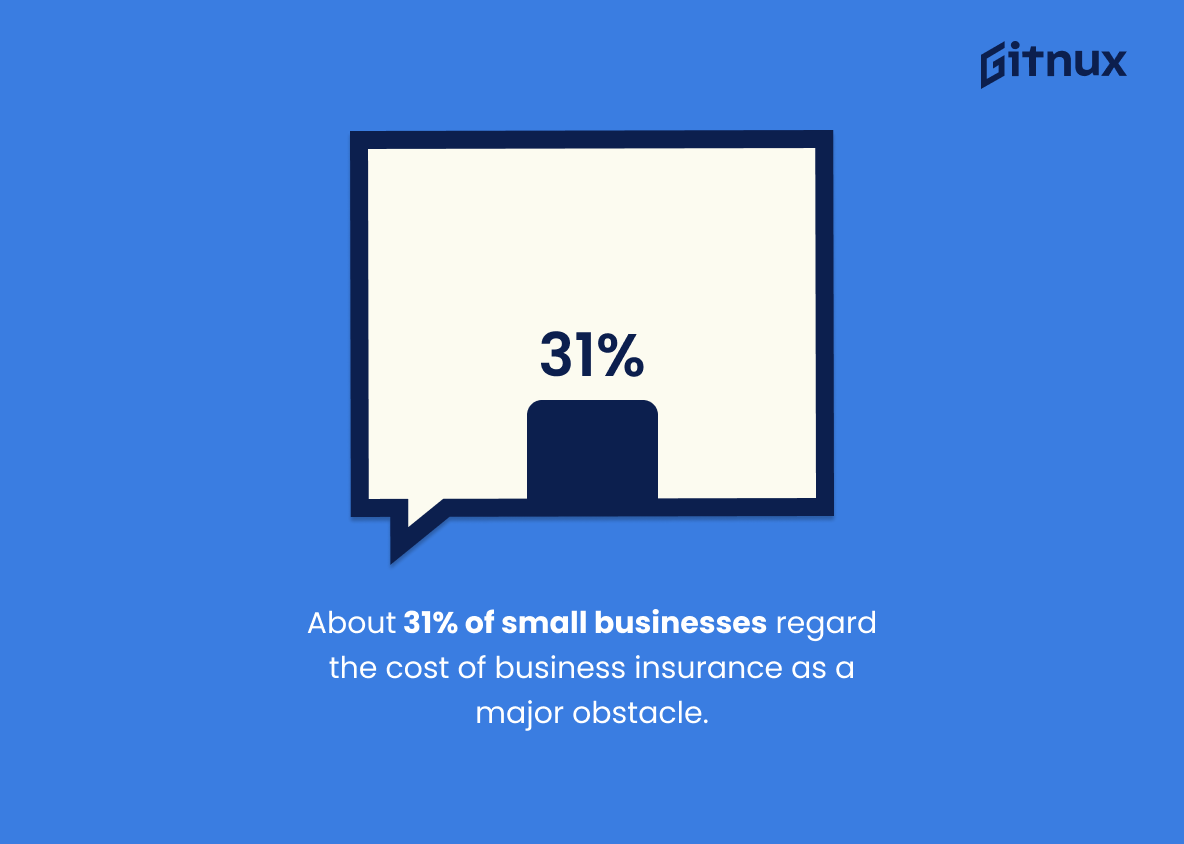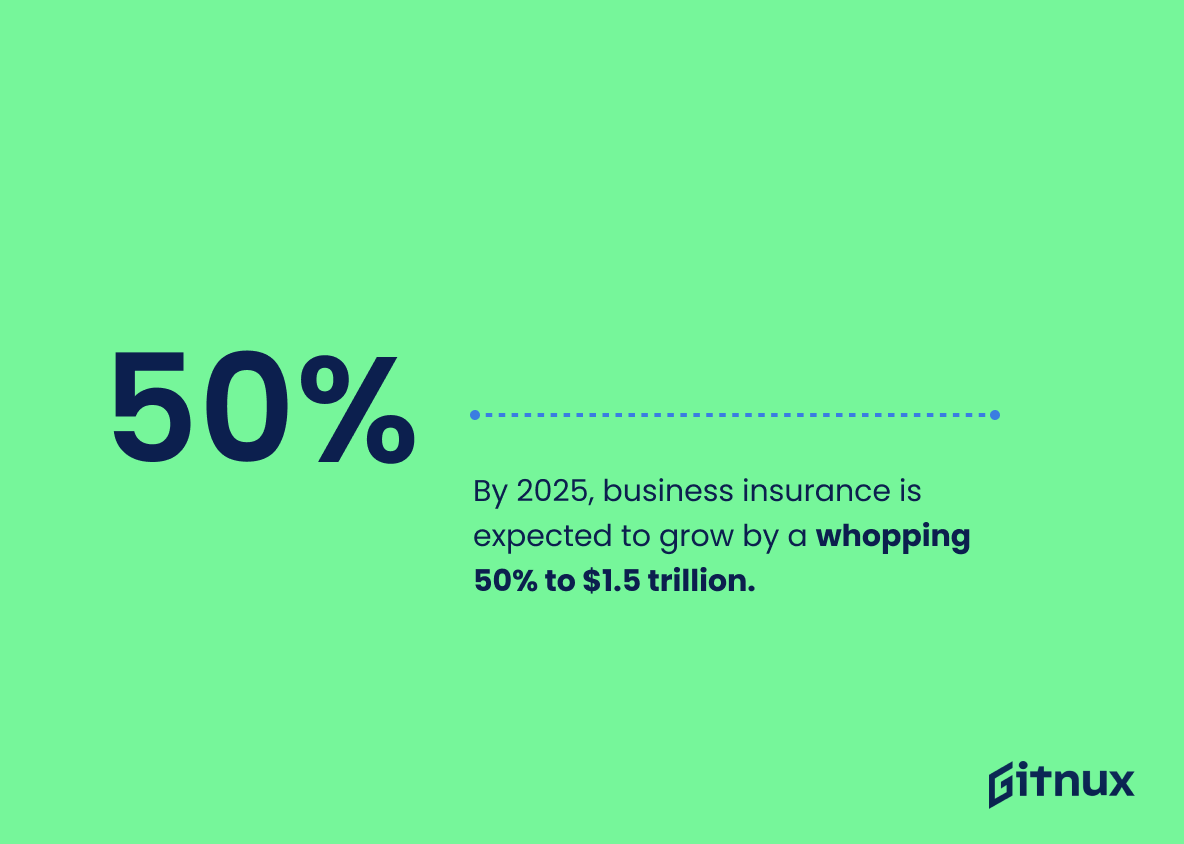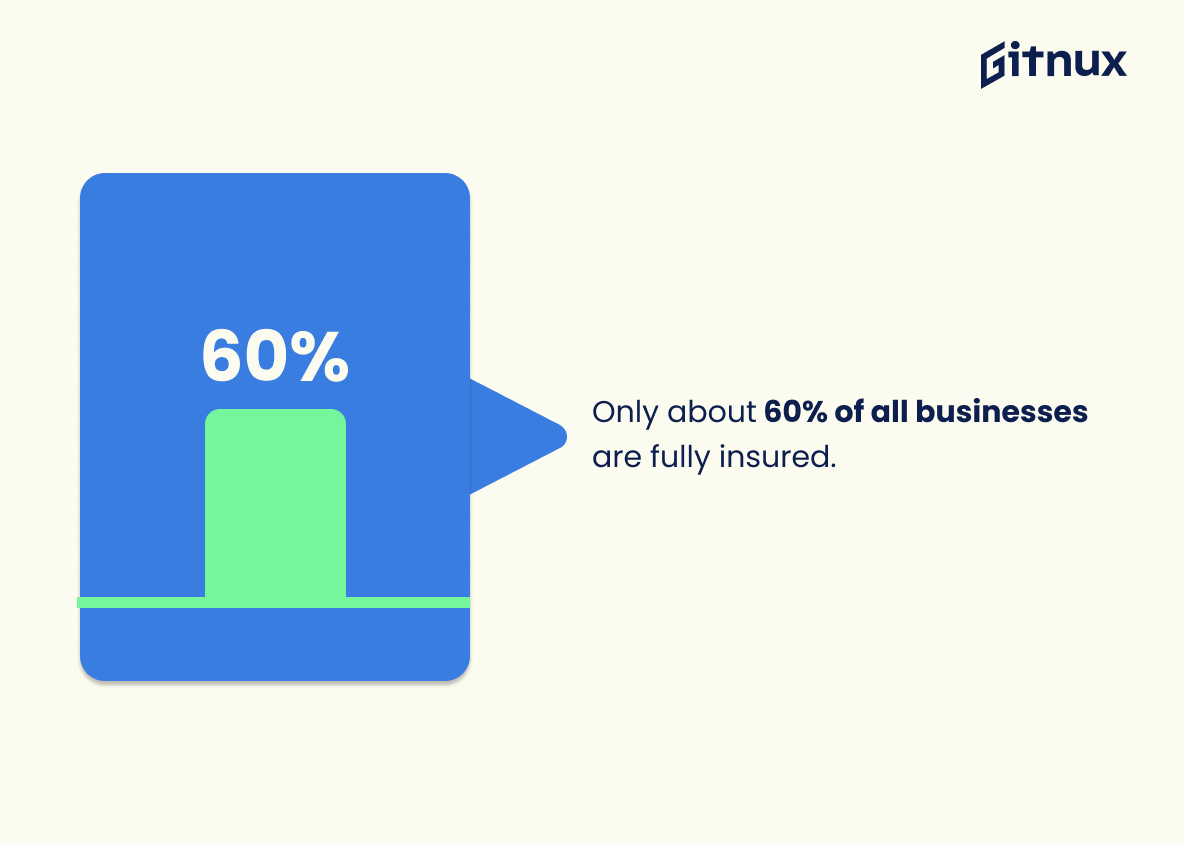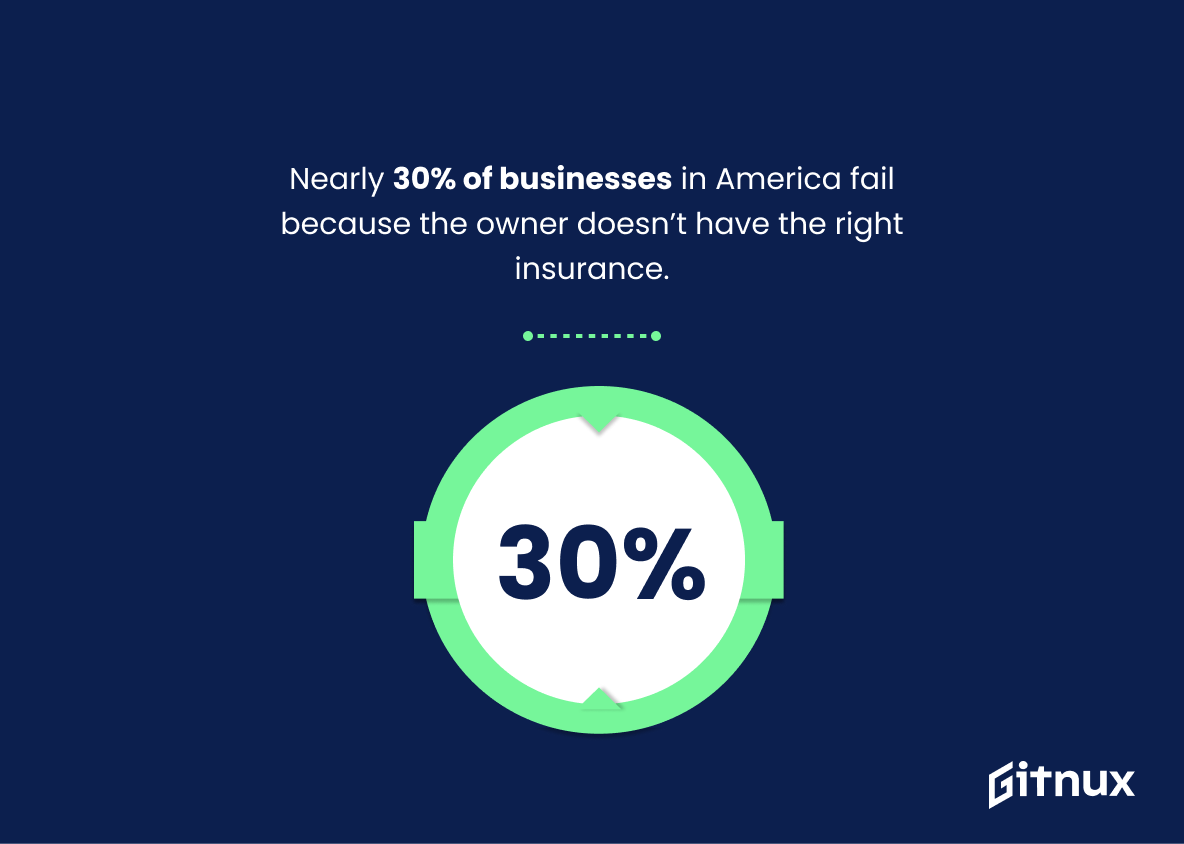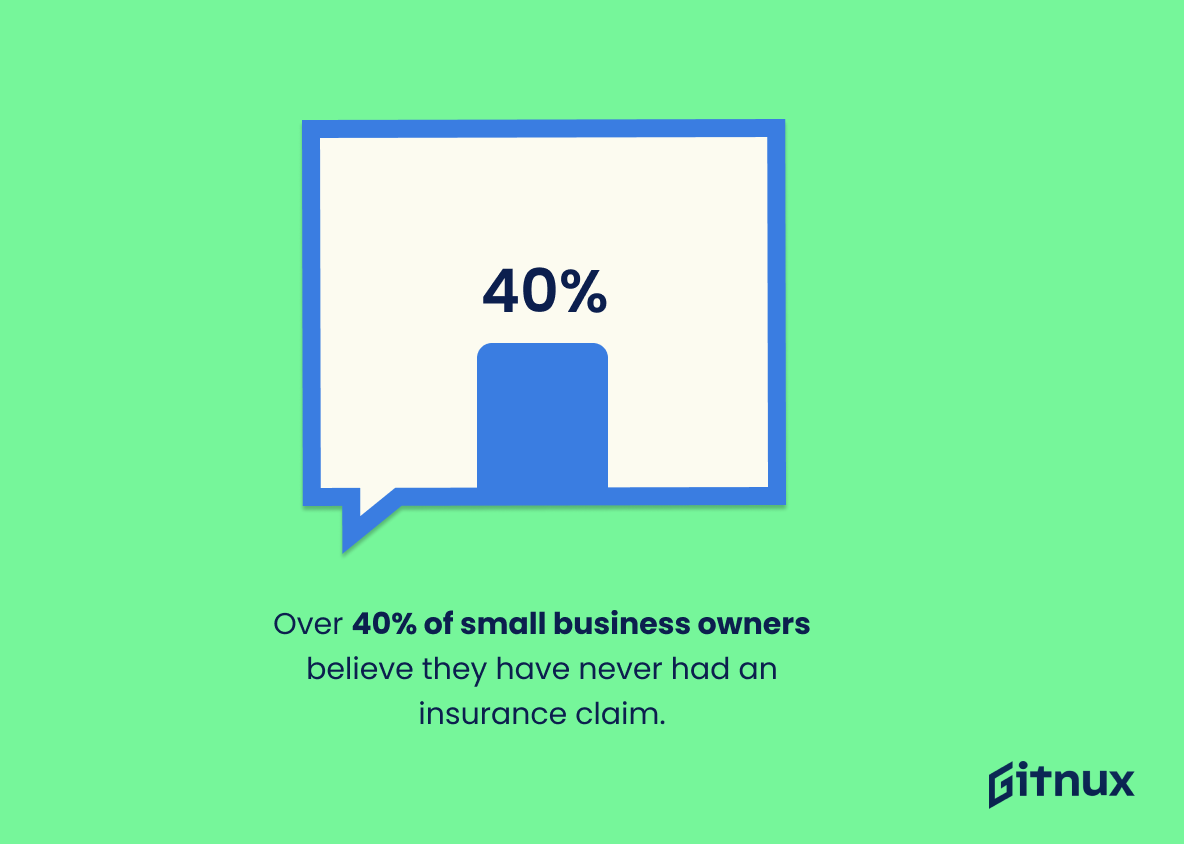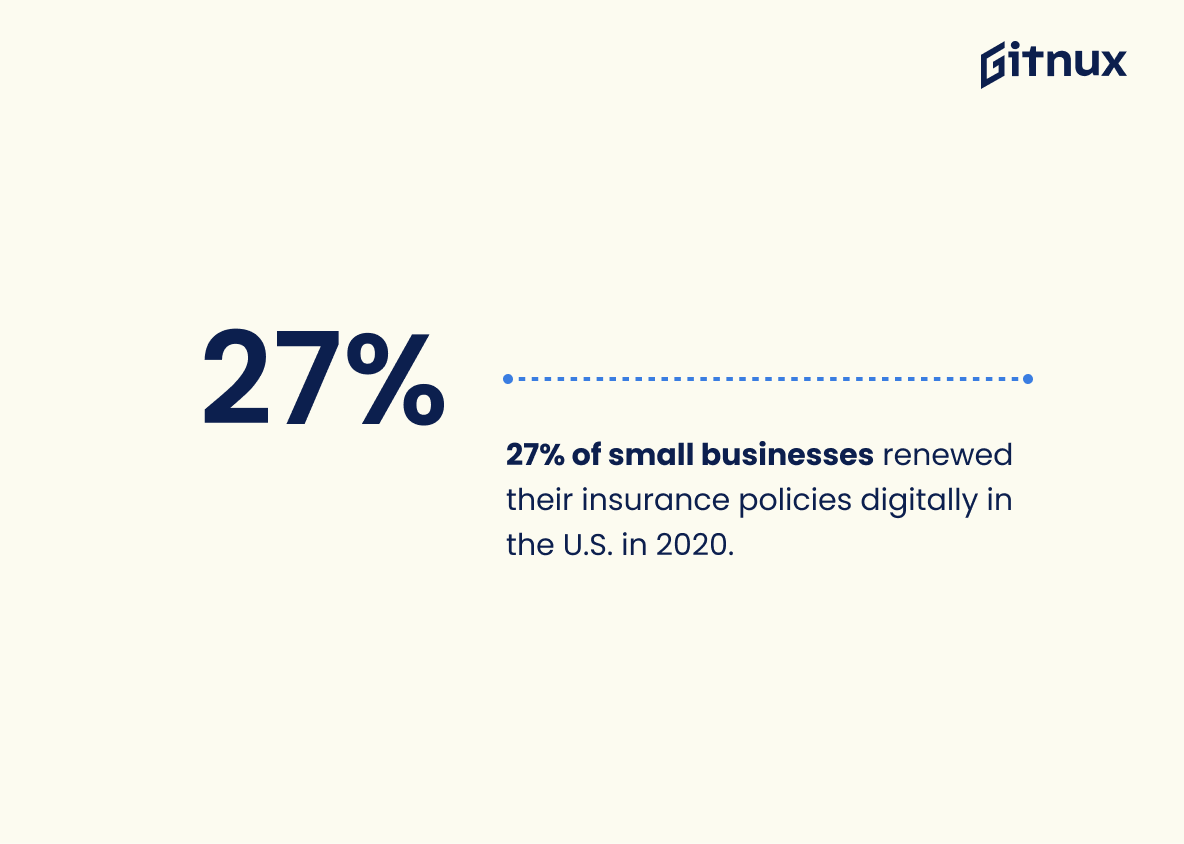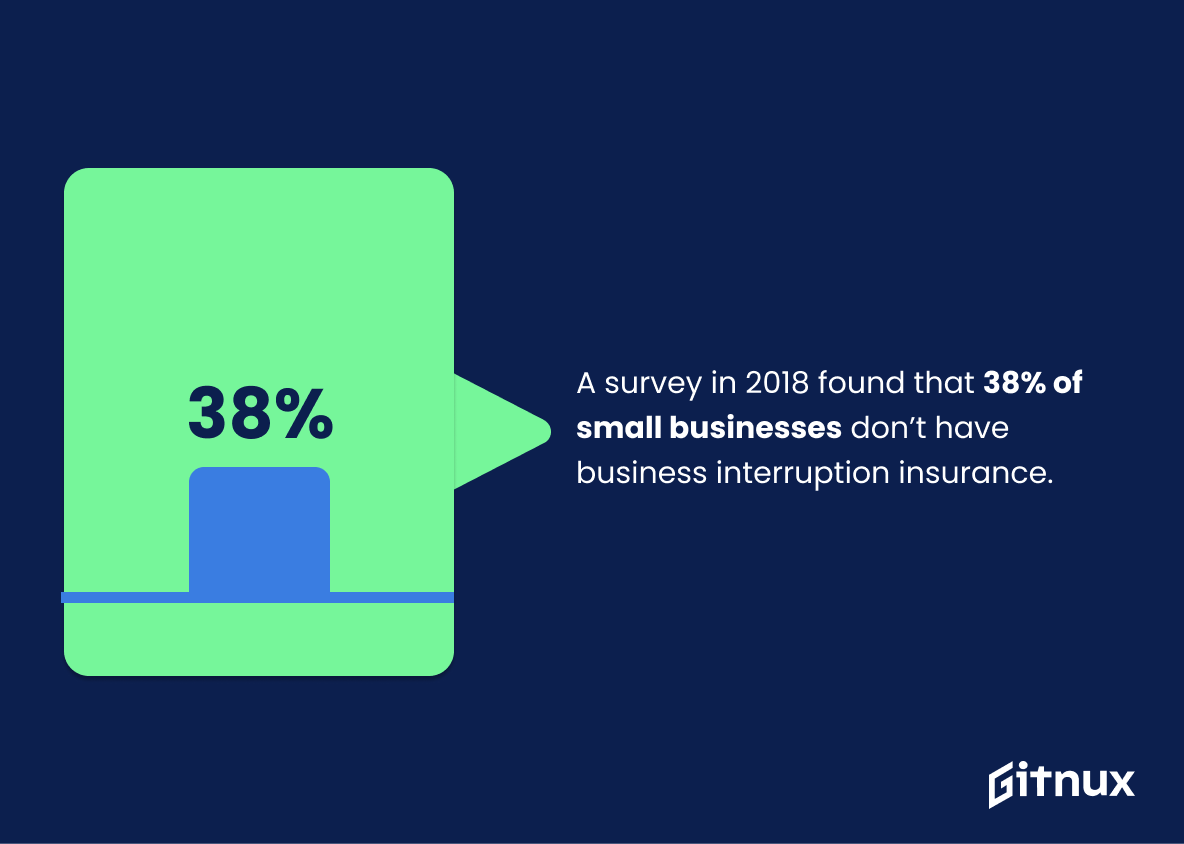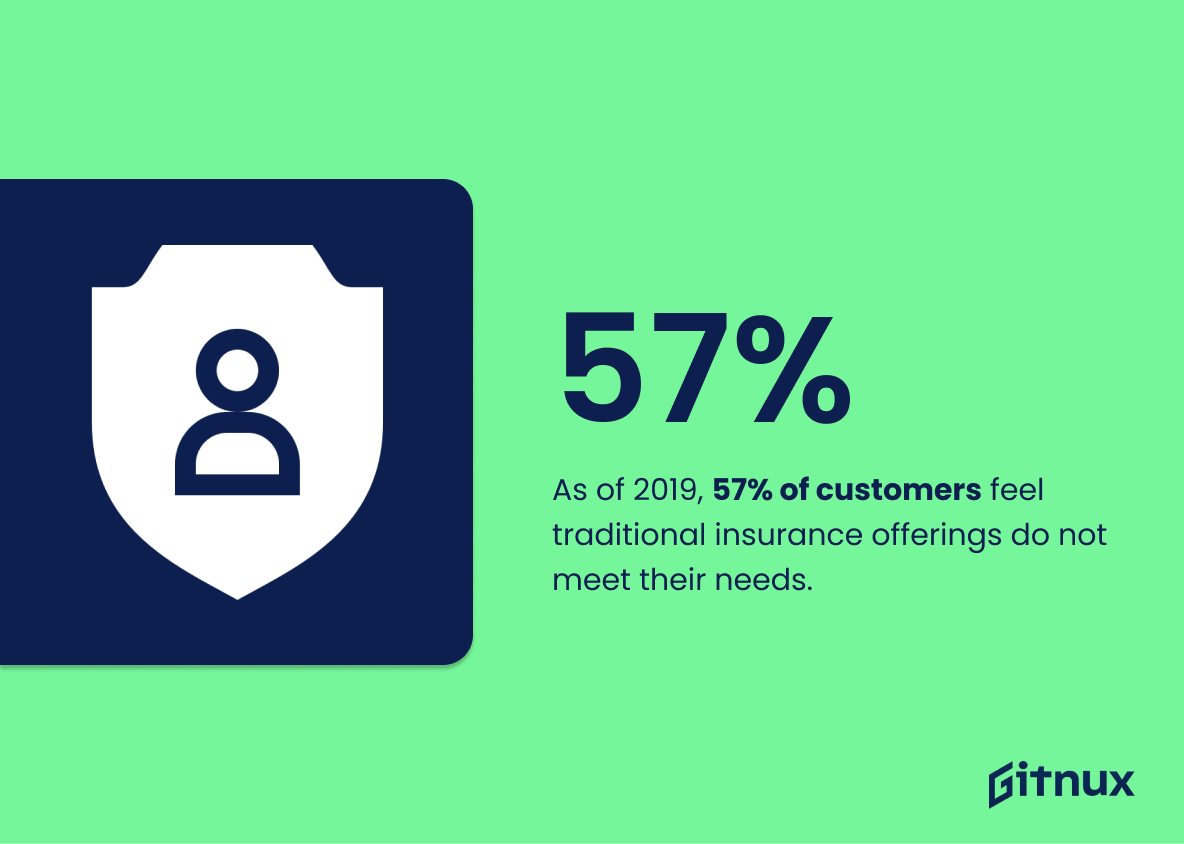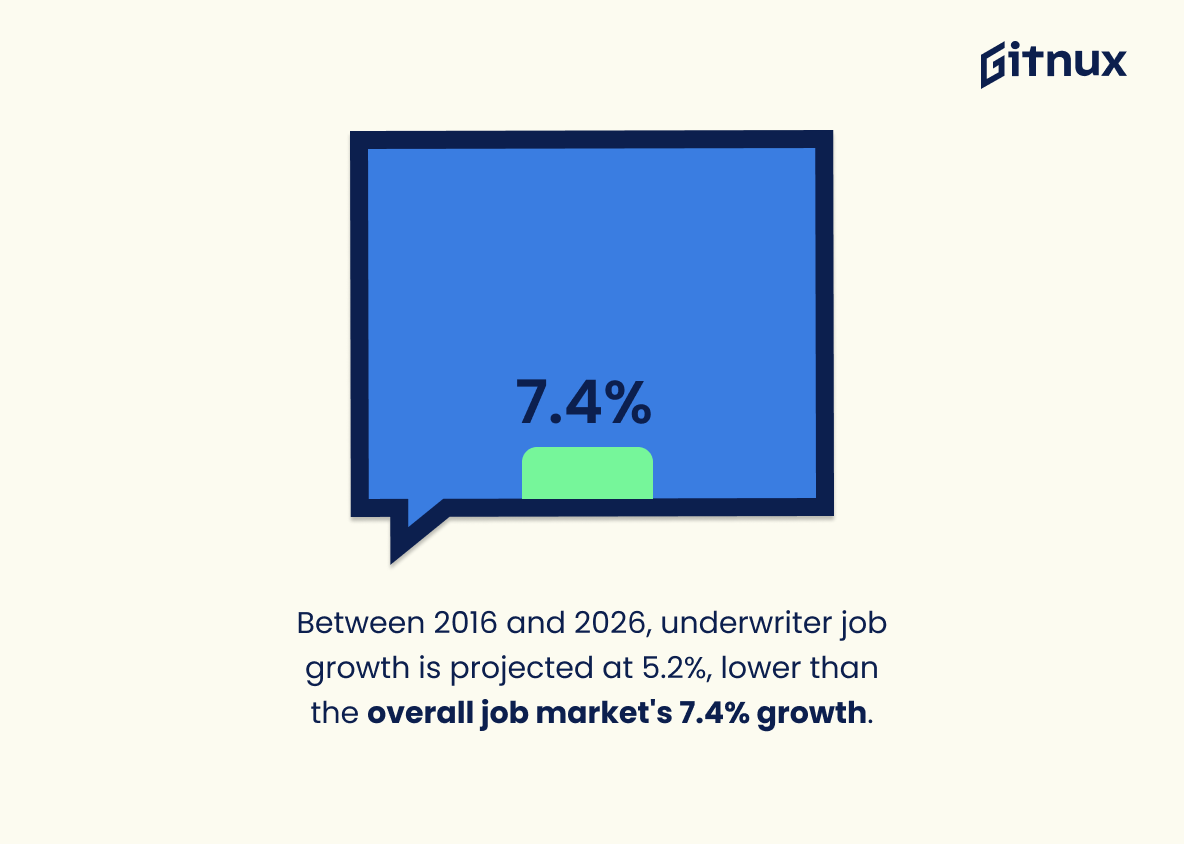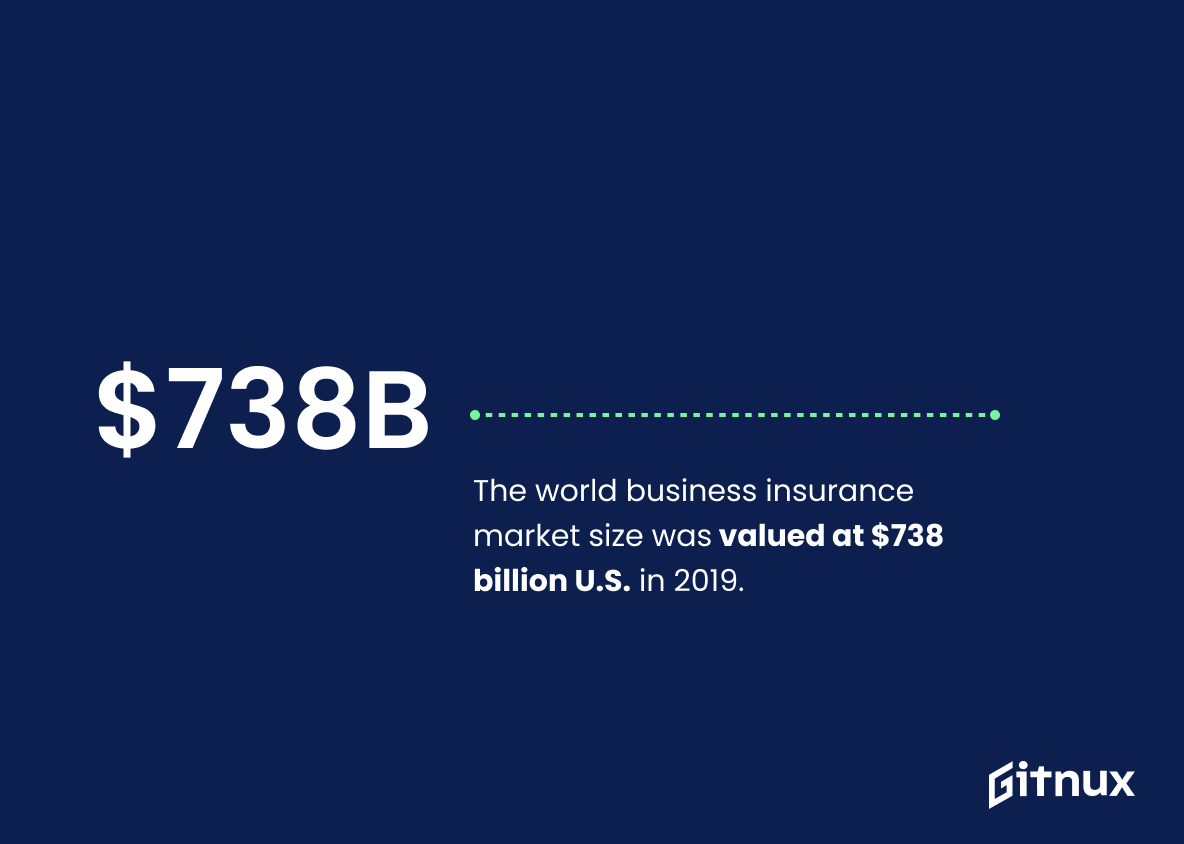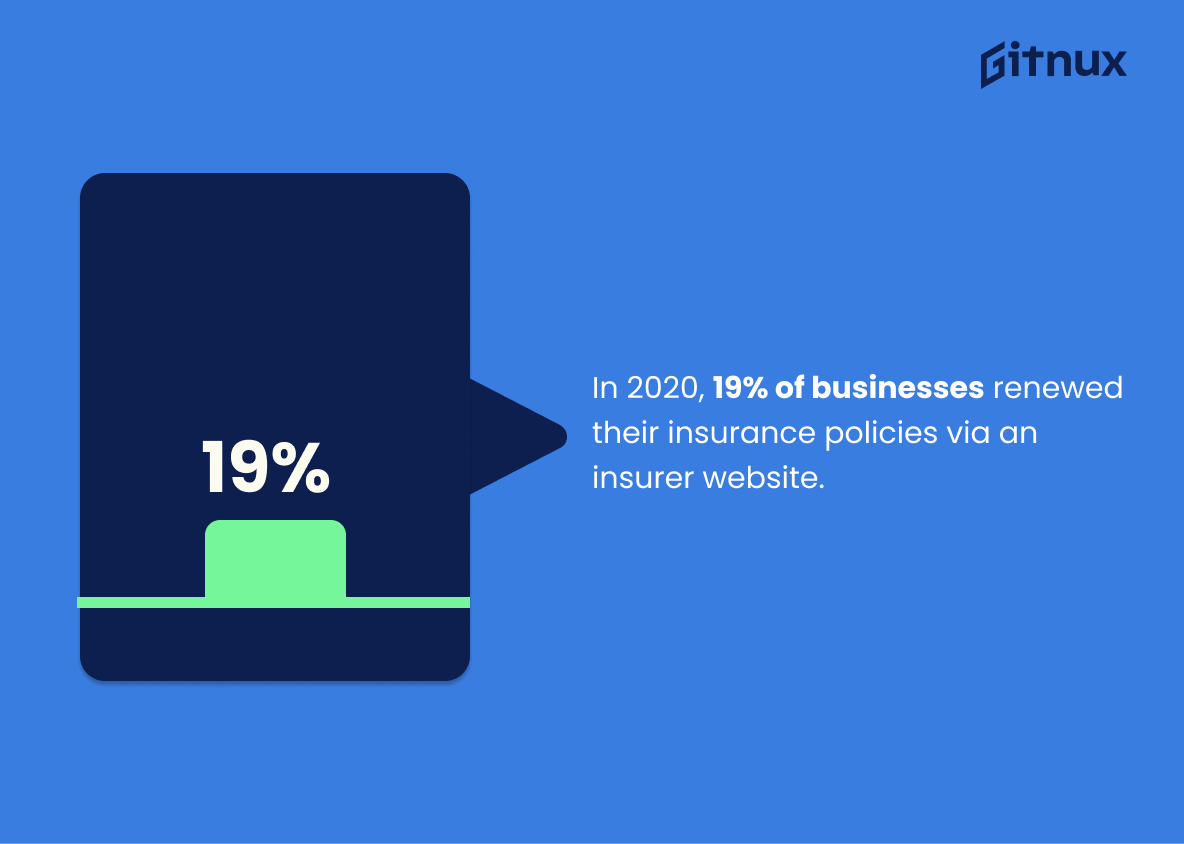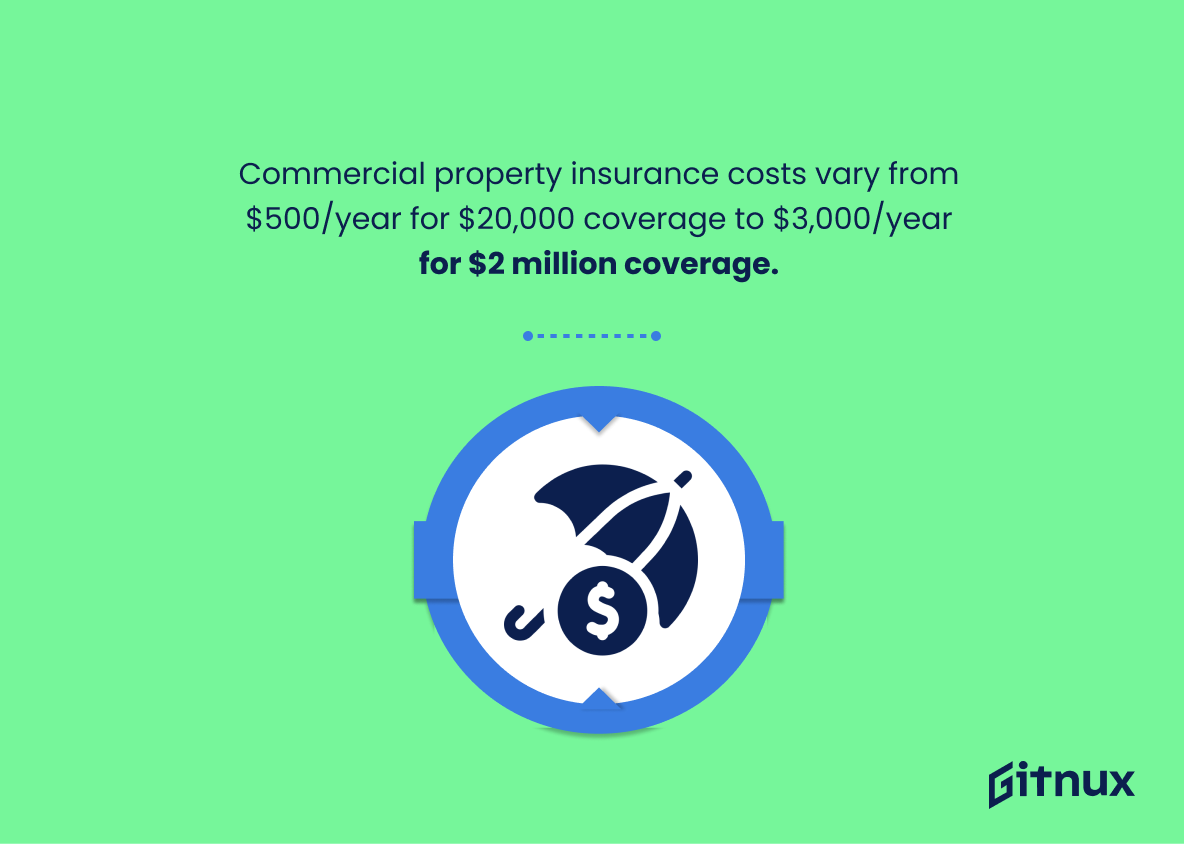Understanding business insurance is essential for entrepreneurs aiming to safeguard their assets. While insurance may seem overwhelming initially, statistics can clarify its value. This article presents key business insurance data highlighting its importance in modern entrepreneurship. To protect your business from unexpected risks, it’s crucial to grasp these figures. Dive into business insurance data to uncover trends and insights that will shape the industry’s future.
The Latest Business Insurance Statistics Unveiled
In 2021, premiums for commercial auto insurance in the United States reached over $35.42 billion.
Highlighting the 2021 statistic of commercial auto insurance premiums in the United States reaching a staggering $35.42 billion underlines the growing financial significance of business insurance. It provides a real-time snapshot of how businesses are prioritizing risk management. This data-point serves as a robust indicator for businesses, investors, and policymakers about the expansive scale of the commercial auto insurance sector within the broader insurance market. Furthermore, it underscores the expanding liabilities faced by businesses on account of their vehicular fleet operations, reinforcing key insights on risk assessment and financial planning for businesses. Thus, in the narrative of business insurance statistics, the relevance of this figure is substantial, punctuating the evolving dynamics of business risk and insurance strategy.
About 31% of small businesses regard the cost of business insurance as a major obstacle.
In the vast landscape of entrepreneurial challenges, one mountain looms particularly large – the intimidating cost of business insurance. Shockingly, almost a third of all small businesses identify this monolith as a major obstacle. This gives a stark and significant insight into the hurdles faced by small businesses, demonstrating the gravity of insurance costs in their operational journey. In the context of Business Insurance Statistics, this facet magnifies the urgency for more affordable and accessible insurance solutions, acting as a catalyst in inciting industry-wide discussions and potentially paving the way towards more supportive insurance models.
By 2025, business insurance is expected to grow by a whopping 50% to $1.5 trillion.
Peering through the lens of numbers, the future for business insurance exhibits a fascinating progress. An anticipated growth surge of a staggering 50%, elevating the value to $1.5 trillion by 2025, evokes not just admiration but also critical curiosity. Within the tapestry of a blog post about Business Insurance Statistics, this profound forecast threads an unmissable narrative.
The number underscores the escalating recognition and uptake of business insurance among corporations, signaling a paradigm shift towards risk-conscious business strategies. It’s akin to painting a vibrant picture of a dynamic market where economic resilience and financial preparedness are increasingly valued. Furthermore, the predicted growth rate sparks an intriguing conversation about market drivers, investment opportunities, and potential challenges.
It’s not just a statistic, rather, it serves as a compelling beacon, illuminating the evolving landscape of business insurance and the broader financial currents it navigates. This prominent relay of information instills real-world relevance into your blog, rendering it an indispensable tool for decision-makers, investors, and industry observers alike.
Only about 60% of all businesses are fully insured.
Unveiling the magnitude of the insurance blanket, it’s startling to note that a substantive 40% of businesses float unprotected on the sea of uncertainty. Stated differently, only 60% of businesses are fully fortified by insurance. This paints an intriguing landscape where the majority may have covered their assets, liability, and revenue streams, but a significant percentage remains exposed to financial blows from unforeseen incidents. Thus, the essence of business insurance and its prudent management become exceedingly pertinent, casting a spotlight on why more businesses should consider comprehensive coverage as a crucial business strategy for long-term sustainability.
Nearly 30% of businesses in America fail because the owner doesn’t have the right insurance.
Highlighting the startling statistic that nearly 30% of American businesses collapse due to inadequate insurance coverage serves as a sobering wake-up call in the panorama of business insurance statistics. It paints a vivid picture of the potential peril business owners face – one that could be mitigated with the right insurance protection. In the uproar of entrepreneurial zeal, insurance can often take a backseat, but this number forces a sharp, unrelenting focus back onto it. It injects a stirring sense of urgency and a stark reminder about the catastrophic implications of a lack of insurance, thus underpinning the critical importance of making judicious insurance decisions for the continued survival and success of their businesses.
The average business insurance cost for small businesses is $741 per year.
Honing in on the $741 annual average insurance cost for small businesses offers crucial insights for entrepreneurs. It not only highlights the magnitude of financial commitment involved but also serves as a benchmark for comparing insurance costs across industries and regions. This numeric illustration sharpens the reader’s understanding of the prevailing insurance landscape, enabling them to calibrate their budgeting decisions accordingly. In essence, this statistic infuses a dose of reality into the abstract world of business insurance, making it palpable, relatable, and actionable for the readers of the business insurance statistics blog post.
Over 40% of small business owners believe they have never had an insurance claim.
Diving into the depths of the thought-provoking statistic – ‘Over 40% of small business owners believe they have never had an insurance claim’, paints a fascinating picture on the canvas of business insurance statistics. It’s akin to a beacon, shedding light on the mindset of small business owners and their perceptions towards insurance claims.
The statistic is intriguing in the sense that it reveals an unawareness or a false sense of security among a considerable quantity of small business owners. Perhaps they have been fortunate to steer clear of circumstances requiring an insurance claim, or maybe, they’re oblivious to incidents that could have warranted such claims.
Within the framework of a Business Insurance Statistics blog post, this statistic serves as a pivotal discussion point. It paves the way for enlightening conversations about the need for enhanced insurance literacy among small business owners. Moreover, it underscores the indispensable role of insurance brokers, not only in selling policies but also in educating clients about potential risks and how to utilize their insurance cover effectively.
Therefore, appreciating this seemingly ordinary statistic leads to a discovery of its underlying implications – necessity for improved risk management, raising insurance awareness and strengthening the safety net for small businesses.
27% of small businesses renewed their insurance policies digitally in the U.S. in 2020.
Highlighting the statistic that indicates ‘27% of small businesses renewed their insurance policies digitally in the U.S. in 2020’ paints a vivid picture of the emerging narrative surrounding the digitization of business operations. It illustrates the growing dependence of small entities on digital platforms, in this case for insurance renewals, reflecting a broader shift. This could shape business models, impact strategic partnerships in the insurance industry, and signal evolving consumer habits. The release of such data-point on our blog demonstrates the changing landscape in business insurance strategies. Moreover, this data injects fresh insight, fueling new discussions around how insurance providers need to improve their digital channels to cater to this growing demand. Plus, it is an unignorable hint for other businesses to stay ahead of the curve in this digital race.
A survey in 2018 found that 38% of small businesses don’t have business interruption insurance.
Unveiling the layers of the 2018 survey statistic, it illuminates a significant vulnerability in the small business landscape. In a terrain where 38% of these enterprises operate sans business interruption insurance, the heightened risk of financial devastation in the face of sudden disruptions is palpable. This reality is of critical concern and underlines the importance of comprehensive coverage in safeguarding business longevity. For those delving into the domain of business insurance, this statistic serves as an essential compass, echoing the call for a more fortified business landscape against potential interruptions.
Only 34% of small businesses have a business owners policy (BOP) which combines general liability and property insurance into one policy.
Delving into the intriguing world of business insurance statistics, we stumble upon a striking revelation. Barely over a third, a mere 34%, of small businesses possess a Business Owner’s Policy (BOP), an umbrella that conveniently melds general liability and property insurance. This single weave captures one of the most palpable risks a business owner grapples with in a simple, stark numeric form.
Humour us for a moment and consider these implications. The sparse number underlines a vast, untapped potential for insurance companies to extend their portfolio of services. More alarmingly, it highlights an alarming level of exposure faced by small businesses who are seemingly sailing unprotected in tumultuous seas of uncertainty, without the security of combined insurance.
Tales woven by this statistic underscore a gap in risk management, casting a call to action for both industry providers and small businesses. Insurance companies might revisit their communication strategies, leveraging this statistic which starkly illustrates the need for providing comprehensive plans that cater to small businesses. Simultaneously, it roots a seed of doubt in the minds of business owners, spurring them to reevaluate their preparedness to face potential threats.
Stepping away, this statistic isn’t just another figure in a report. It hints at silent vulnerabilities, untapped commercial possibilities, and efforts that need redirection – all integral chapters in the saga of Business Insurance Statistics.
As of 2019, 57% of customers feel traditional insurance offerings do not meet their needs.
Unpacking this revealing statistic, we uncover an interesting fact that has massive implications for the insurance industry. Derived from 2019 data, it shows that a staggering 57% of customers perceive traditional insurance offerings as failing to serve their unique requirements. Pushing this under the spotlight in a blog post about Business Insurance Statistics presents an intriguing background for a discussion on several key issues in the sector.
Of particular concern is the apparent gap between insurance coverage providers and their customers’ expectation, which the statistic highlights. This gap raises crucial questions about the industry’s ability to adapt and innovate to tailor-fit strategies for diverse customer needs, challenges, and expectations. It paints a picture of opportunity for businesses, demanding a reflection of whether insurance companies can revise their traditional models and embrace more flexible and customer-centric approaches.
Ultimately, presenting such a statistic in a blog post heightens the wider discourse on the role of innovation, personalization, and customer satisfaction in the insurance industry. It prompts insurers to rethink their strategies and can drive a more comprehensive dialogue on the future direction of business insurance. It not only piques curiosity but also stirs action – may it be for an insurance company executive, a small business owner, or an interested reader.
From 2016 to 2026, the Bureau of Labor Statistics projects an increase in underwriter jobs (those who approve insurance policies) of 5.2%, below the overall job market’s projected growth of 7.4%.
Delving into the depths of this statistic reveals that there’s an anticipated growth in underwriter jobs, the gatekeepers of insurance approval, by 5.2% from 2016 to 2026. Interestingly, this growth percentage is somewhat dwarfed by the expected growth of the overall job market, projected at 7.4%.
So, what does this mean for our exploration of Business Insurance Statistics? It implies that the pressure on underwriters might intensify in the coming years as they have to handle more insurance policy demands, yet the growth of their workforce remains slower than the general job market. In effect, it also indicates a possibility of a surge in demand for business insurance, which also potentially hints at a growth in business activities and their subsequent risks that necessitate coverage. The tango of the two growth projections is thus certainly an intriguing dance to watch and analyze over time.
The world business insurance market size was valued at $738 billion U.S. in 2019.
Imagine if you will, a gigantic gold mine, brimming with nuggets of precious metal. That’s essentially what the 2019 valuation of the global business insurance market at $738 billion U.S. represents – a vast, rich landscape of opportunity and investment potential. In the realm of business insurance statistics, this is a key benchmark for understanding the financial magnitude of this sector. It forms a compelling narrative, recounting the immense value at stake in the global insurance industry, the potential payouts for businesses experiencing losses, and the sheer economic power insurers wield when mitigating risks for enterprises around the world. Not to mention, understanding this figure can provide insight into the regional distribution, the types of coverage considered by businesses and can highlight trends as we move forward into the future. So, fasten your seat belts as we traverse down this gold mine of business insurance data.
In 2020, 19% of businesses renewed their insurance policies via an insurer website.
Highlighting the statistic that in 2020, 19% of businesses renewed their insurance policies via an insurer website is critical for several reasons, in our discourse on business insurance statistics. Firstly, it emphasizes the shift and acceptance of digital transformation in the insurance sector. Establishing a digital footprint has become essential for insurers given our increasingly connected world. Furthermore, it exposes potentials for further digital integration that insurance companies could tap into to expand their portfolio and increase user convenience. Lastly, this significant detail portrays how modern businesses are gravitating towards efficiency and convenience in their operations, a trend that can spark discussions on the overall changes in the business landscape.
The average cost of a commercial property insurance policy ranged from $500 per year for $20,000 in coverage to $3,000 per year for $2 million in coverage.
Understanding the correlation between coverage amount and annual premium prices offers a bird’s eye view into the commercial property insurance market, making this statistic a vital anchor point in the context of a blog post about Business Insurance Statistics. By articulating the spectrum of costs, it provides entrepreneurs and established businesses with perspective, allowing them to factor in insurance expenses when drawing up budgets and financial forecasts. It further underscores the importance for business owners to evaluate the scale of their potential risks and investments, hence facilitating informed decisions regarding the level and scope of insurance coverage that would suffice their commercial requirements. It also sparks discussion on affordability and risk management, two key constituents of the business insurance terrain.
The percentage of insured business losses from natural catastrophes was about 30% in 2020.
Translating from the realm of numbers into the language of real-world impacts, the quoted statistic highlights the gravity of insured losses in businesses, an approximate 30% that stemmed from natural catastrophes in 2020. In weaving a narrative in a blog post about Business Insurance Statistics, this figure acts as an eye-opening revelation, underscoring the crucial role of insurance in providing a financial safety net against such unpredictable events. It imparts a compelling message concerning the heightened risks businesses confront in an era of intensifying natural disasters, framing the need for a comprehensive insurance policy not as an afterthought, but a strategic necessity. Thus, it amplifies the importance of insurance and risk management in the continuity and survival of businesses.
70% of people say purchasing insurance gives peace of mind.
Delving into the minds of the populace, we unravel that a whopping 70% of individuals declare that buying insurance offers them a sanctuary of serenity. To subtly depict this in the business insurance statistics environment not only highlights the psychological advantage sourcing from purchasing a policy, but it also emboldens more entrepreneurs to imbibe this culture. Their venture’s protection becomes paramount, providing them a cushioned peace, thereby nudging them closer to achieving business stability in their risk-prone journey.
Conclusion
In summary, the world of business insurance is dynamic and continuously evolving. Understanding the detailed statistics presented throughout this blog post, such as the types and number of claims, the average payout, and the varying costs across industries, allow business owners to make informed decisions about coverage.
It proves that business insurance is not an area to which companies can afford to turn a blind eye. It’s a vital tool in your arsenal to protect your venture from unexpected events and liabilities. By remaining current with these trends and figures, you can craft a robust, effective insurance policy that safeguards your business, provides peace of mind, and contributes to your overall growth. Therefore, stay informed, stay covered, and let your business soar to new heights.
References
0. – https://www.www.insureon.com
1. – https://www.www.accenture.com
2. – https://www.www.iris.xyz
3. – https://www.howmuch.net
4. – https://www.www.entrepreneur.com
5. – https://www.www.statista.com
6. – https://www.www.business.org
7. – https://www.www.mckinsey.com
8. – https://www.corporatefinanceinstitute.com
9. – https://www.www.bizfilings.com
10. – https://www.www.globenewswire.com
11. – https://www.www.fool.com
12. – https://www.www.iii.org
13. – https://www.www.bcg.com
14. – https://www.www.jdsupra.com
